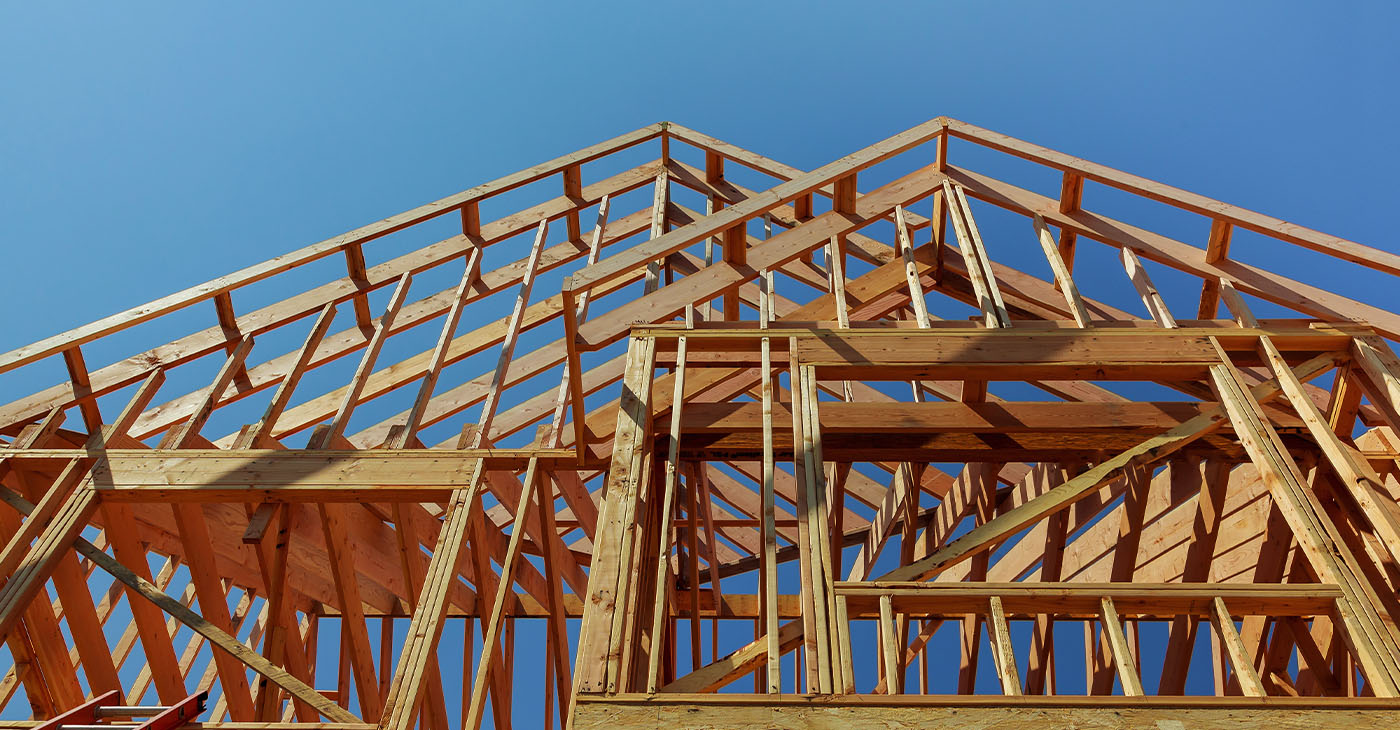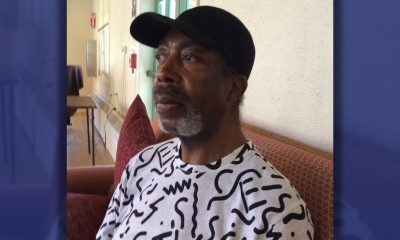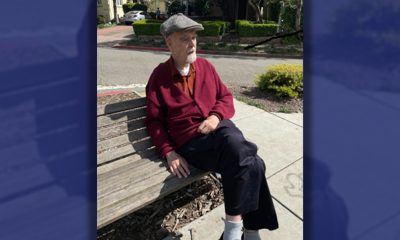Bay Area
‘Godzilla Next Door’: How California Developers Gained New Leverage to Build More Homes
It’s hard to know just how many builder’s remedy projects have been filed across the state. YIMBY Law, a legal advocacy group that sues municipalities for failing to plan for or build enough housing, has a running count on its website of 46 projects, though its founder, Sonja Trauss, admits that it’s an imperfect tally.

By Ben Christopher
CalMatters
Late last fall, a Southern California developer dropped more than a dozen mammoth building proposals on the city of Santa Monica that were all but designed to get attention.
The numbers behind WS Communities’s salvo of proposals were dizzying: 14 residential highrises with a combined 4,260 units dotting the beachside city, including three buildings reaching 18 stories. All of the towers were bigger, denser and higher than anything permitted under the city’s zoning code.
City Councilmember Phil Brock attended a town hall shortly after the announcement and got an earful. A few of the highlights: “Godzilla next door,” “a monster in our midst” and “we’re going to never see the sun again.”
“‘Concerned’ would be putting it mildly,” Brock said of the vibe among the attendees. “A lot of them were freaked.”
As it turns out, freaking locals out may have been the point.
WS Communities put forward its not-so-modest proposal at a moment when it had extreme leverage over the city thanks to a new interpretation of a 33-year-old housing law. Santa Monica’s state-required housing plan had expired and its new plan had yet to be approved. According to the law, in that non-compliance window, developers can exploit the so-called builder’s remedy, in which they can build as much as they want wherever they want so long as at least 20% of the proposed units are set aside for lower income residents.
Over the last two years, local governments across California have had to cobble together new housing plans that meet a statewide goal of 2.5 million new units by 2030. At last count, 227 jurisdictions — home to nearly 12 million Californians, or about a third of the state population — still haven’t had their plans certified by state housing regulators, potentially opening them up to builder’s remedy projects.
That gives developers a valuable new bargaining chip.
WS Communities used its advantage in Santa Monica to broker a deal in which it agreed to rescind all but one of its 14 builder’s remedy projects in exchange for fast-tracked approval of 10 scaled-down versions.
“The builder’s remedy — the loss of zoning control, the ability of a developer to propose anything, Houston-style, whatever they want, no zoning regulations — that gets people’s attention,” said Dave Rand, the land-use attorney representing the WS Communities. “The builder’s remedy can be a strategic ploy in order to potentially leverage a third way.”
For the developer, the settlement — which still needs a final vote to fully be implemented — is a major win. But this use of a long-dormant law also represents a shift in the politics of housing in California, reflecting a new era of developer empowerment bolstered by the growing caucus of pro-building lawmakers in the Legislature.
“The old games of begging municipalities for a project and reducing the density to get there and kissing the ass of every councilmember and planning official and neighbor — that’s the old way of doing things,” said Rand. “Our spines are stiffening.”
It’s hard to know just how many builder’s remedy projects have been filed across the state. YIMBY Law, a legal advocacy group that sues municipalities for failing to plan for or build enough housing, has a running count on its website of 46 projects, though its founder, Sonja Trauss, admits that it’s an imperfect tally.
Some of the projects, like those in Santa Monica, are towers with hundreds of units. Others are more modest apartment buildings. Whatever the total, Trauss said it represents a significant uptake for a novel legal strategy.
“There were a lot of naysayers who were like ‘it’s too risky,’ ‘nobody knows what’s gonna happen,’ ‘nobody’s gonna do it,’ blah, blah, blah,” she said. “I feel vindicated. You know, people are trying it.”
But counting just the units proposed under the law misses its broader impact, said UC Davis law professor Chris Elmendorf.
Multiple cities rushed forward their housing plans this year, with city attorneys, city planners and councilmembers warning that failure to do so before a state-imposed deadline could invite a building free-for-all.
“All the action is in negotiation in the shadow of the law,” said Elmendorf. The law “may result in a lot of other projects getting permitted that never would have been approved because the developer had this negotiating chip.”
Rediscovering the California builder’s remedy
If it’s possible for someone to unearth a forgotten law, Elmendorf can rightly claim to have excavated the builder’s remedy.
The Legislature added the provision to the government code in 1990, but no one used it for decades. In the one case Elmendorf found where someone tried — a homeowner in Albany, just north of Berkeley, who wanted to build a unit in his backyard in 1991 without adding a parking spot — local planners shot down the would-be builder.
Elmendorf stumbled upon the long-ignored policy 28 years later while researching East Coast laws that let developers circumvent zoning restrictions in cities short on affordable housing.
He started tweeting about it. He even dubbed the California law the “builder’s remedy,” borrowing the coinage from Massachusetts.
“I think it’s fair to say that people in California had forgotten about the builder’s remedy almost completely until I started asking about it on Twitter,” he said. ” I think those twitter threads led some people to say, ‘huh.'”
Among those who noticed: staff at the state Housing and Community Development department who began listing the “remedy” as a possible consequence of failing to plan for enough housing.
Why was the builder’s remedy largely forgotten? The text of the law is complicated and it’s only relevant once every eight years, when cities and counties are required to put together their housing plan. Plus, though it allows developers to ignore a city’s zoning code, it’s not clear that it exempts them from extensive environmental review, making the cost savings of using it uncertain.
But more importantly, up until recently, invoking the builder’s remedy — the regulatory equivalent of a declaration of war — was bad for business.
Historically, local governments have had sweeping discretion over what gets built within their borders, where and under what terms and conditions. Developers and their lawyers hoping to succeed in such a climate had to excel at what one land use attorney dubbed the art of “creative groveling.”
But in recent years, as the state’s housing shortage and resulting affordability crisis have grown more acute, lawmakers have passed a series of bills to take away some of that local control. In many cases, cities and counties are now required to approve certain types of housing, like duplexes, subsidized housing apartments and accessory dwelling units, as long as the developer checks the requisite boxes.
That’s all led some developers to rethink their approach to dealing with local governments — one that is less concerned with building bridges and isn’t so afraid to burn a few.
Santa Monica makes a deal
Santa Monica’s city council voted unanimously for the deal with WS Communities early last month — but grudgingly.
In exchange for the developer pulling its original proposals, the city agreed to a streamlined approval process for the new plans. The council also agreed to pass an ordinance to give the developer extra goodies on the 10 remaining projects.
If the city doesn’t pass the ordinance, according to the settlement, WS Communities has the right to revive the builder’s remedy for all 14 towers.
Councilmember Brock, elected in 2020 along with a slate of development-skeptics, was hardly a fan of the deal. But as he saw it, the prospect of a lengthy legal battle that the city’s attorney insisted Santa Monica would lose gave the council little choice. That didn’t make what Brock viewed as a hard-knuckle negotiating tactic any easier to swallow.
“I don’t believe for a minute that they ever planned to build all those projects,” he said.
Councilmember Caroline Torosis, who was elected last fall, laid the blame on the prior council for failing to pass a timely housing plan. Even so, she said the city had no choice but to reclaim control over its own land use from the developer.
“We were put in a difficult situation,” she said. “I think that this was absolutely the best negotiated settlement that we could have reached, but of course, they had leverage.”
Both Scott Walter, the president of WS, and Neil Shekhter, the founder of the parent company, NMS Properties, refused a request to be interviewed through their lawyer, Rand.
But in true property kingpin fashion, WS was able to flip these builder’s remedy proposals into things of even greater value: ironclad plans that it can build out quickly or sell to another developer.
“The builder’s remedy projects were anything but fast and certain,” said Rand. “This has been parlayed into something with absolute certainty and front-of-the-line treatment.”
Affluent California cities fight back
About an hour’s drive northeast of Santa Monica, the foothill suburb of La Canada Flintridge recently rejected a builder’s remedy application.
During a May 1 hearing, Mayor Keith Eich stressed the city was “not denying the project.” Instead, they were denying that the builder’s remedy itself even applied to the city.
The argument: The housing plan the council passed last October complies with state law. California’s Housing and Community Development department rejected that version of the plan and has yet to certify a new one. But La Canada’s city attorney, Adrian Guerra argued at the hearing that the agency’s required changes were minor enough to make the October plan “substantially” compliant.
That’s not how state regulators see it. In March, the housing department sent the city a letter of “technical assistance.”
“A local jurisdiction does not have the authority to determine that its adopted element is in substantial compliance,” the letter reads.
Not so, said Guerra: “The court would make that determination.”
A number of cities across the state have made that argument. Among them are Los Altos Hills and Sonoma. Beverly Hills is already fending off a lawsuit contending that the law applies to that city, though it recently rejected a builder’s remedy project on extensive technical grounds.
It’s a question that’s almost certain to end up in court. A recent California’s Fifth Circuit Court of Appeal ruling offers legal fodder to both sides.
The April opinion ruled against the state housing department’s certification of the City of Clovis’ housing plan. That’s a point for those arguing that the word of state regulators is not inviolate. But the ruling also noted that courts “generally” defer to the state agency unless its decision is “clearly erroneous or unauthorized.”
Down the coast, the City of Huntington Beach isn’t relying on such legal niceties. In March, the city council passed an ordinance banning all builder’s remedy projects under the argument that the law itself is invalid. Days later, the Newsom administration sued the city.
But in Santa Monica, city council members didn’t see much upside in pushing back.
“You can’t just fight a losing battle,” Brock said. “I think anybody who decides they’re gonna be an all star NIMBY is up for failure.”
Activism
S.F. Black Leaders Rally to Protest, Discuss ‘Epidemic’ of Racial Slurs Against Black Students in SF Public School System
Parents at the meeting spoke of their children as no longer feeling safe in school because of bullying and discrimination. Parents also said that reported incidents such as racial slurs and intimidation are not dealt with to their satisfaction and feel ignored.

By Carla Thomas
San Francisco’s Third Baptist Church hosted a rally and meeting Sunday to discuss hatred toward African American students of the San Francisco Unified School District (SFUSD).
Rev. Amos C. Brown, president of the San Francisco NAACP and pastor of Third Baptist Church, along with leadership from local civil rights groups, the city’s faith-based community and Black community leadership convened at the church.
“There has been an epidemic of racial slurs and mistreatment of Black children in our public schools in the city,” said Brown. “This will not be tolerated.”
According to civil rights advocate Mattie Scott, students from elementary to high school have reported an extraordinary amount of racial slurs directed at them.
“There is a surge of overt racism in the schools, and our children should not be subjected to this,” said Scott. “Students are in school to learn, develop, and grow, not be hated on,” said Scott. “The parents of the children feel they have not received the support necessary to protect their children.”
Attendees were briefed last Friday in a meeting with SFUSD Superintendent Dr. Matt Wayne.
SFUSD states that their policies protect children and they are not at liberty to publicly discuss the issues to protect the children’s privacy.
Parents at the meeting spoke of their children as no longer feeling safe in school because of bullying and discrimination. Parents also said that reported incidents such as racial slurs and intimidation are not dealt with to their satisfaction and feel ignored.
Some parents said they have removed their students from school while other parents and community leaders called on the removal of the SFUSD superintendent, the firing of certain school principals and the need for more supportive school board members.
Community advocates discussed boycotting the schools and creating Freedom Schools led by Black leaders and educators, reassuring parents that their child’s wellbeing and education are the highest priority and youth are not to be disrupted by racism or policies that don’t support them.
Virginia Marshall, chair of the San Francisco NAACP’s education committee, offered encouragement to the parents and students in attendance while also announcing an upcoming May 14 school board meeting to demand accountability over their mistreatment.
“I’m urging anyone that cares about our students to pack the May 14 school board meeting,” said Marshall.
This resource was supported in whole or in part by funding provided by the State of California, administered by the California State Library via California Black Media as part of the Stop the Hate Program. The program is supported by partnership with California Department of Social Services and the California Commission on Asian and Pacific Islander American Affairs as part of the Stop the Hate program. To report a hate incident or hate crime and get support, go to CA vs Hate.
Bay Area
Mayor London Breed: State Awards San Francisco Over $37M for Affordable Housing
On April 30, Mayor London N. Breed announced San Francisco has been awarded more than $37.9 million in funding from the California Department of Housing and Community Development (HCD) as part of the State’s Multifamily Housing Program (MHP). The HCD loan will provide the final funding necessary for development of Casa Adelante – 1515 South Van Ness, a 168-unit affordable housing project located in San Francisco’s Mission District.

By Oakland Post Staff
On April 30, Mayor London N. Breed announced San Francisco has been awarded more than $37.9 million in funding from the California Department of Housing and Community Development (HCD) as part of the State’s Multifamily Housing Program (MHP).
The HCD loan will provide the final funding necessary for development of Casa Adelante – 1515 South Van Ness, a 168-unit affordable housing project located in San Francisco’s Mission District.
The new development at 1515 South Van Ness Ave. will provide 168 affordable homes to low-income families, formerly homeless families, and persons living with HIV earning between 25-80% of the San Francisco Area Median Income (AMI).
In addition, the project is anticipated to provide family-friendly amenities and ground floor community-serving commercial spaces that preserve the prevailing neighborhood character of the Calle 24 Latino Cultural District.
“This funding unlocks our ability to move on building affordable housing units for families in San Francisco at a crucial time. We understand the level of need for more housing that is accessible, and like the state, the city continues to face a challenging budget cycle,” said Breed. “1515 South Van Ness is a good example of what can be achieved in San Francisco when you have strong community partnerships and an unwavering commitment to deliver on critical needs for our residents.”
“From the beginning of my term as Supervisor, I have fought to bring affordable housing to 1515 South Van Ness” said Supervisor Hillary Ronen. “In the interim, the site has been utilized for homeless services and shelter, and I am thrilled that HCD has recognized the value of this development, and we are finally ready to break ground and bring 168 affordable homes to low income and formerly homeless families in the Mission.”
Owned and occupied by McMillan Electric Company until 2015, the City and County of San Francisco purchased 1515 South Van Ness Avenue in June 2019 with the intent of developing new affordable housing.
In November 2020, the San Francisco Mayor’s Office of Housing and Community Development (MOHCD) released a Multi-site Request for Qualifications (RFQ) seeking qualified developers to build affordable housing on the site, and subsequently selected Chinatown Community Development Corporation (CCDC) and Mission Economic Development Agency (MEDA) in May 2021 to develop the site.
The project is expected to begin construction in winter 2025.
“A strong, long-term push by Mission advocates to make this site 100% affordable is now paying off, with 168 family units that include services and childcare. People of color communities know what they need, and we are excited to be in partnership with a team, consisting of MEDA, CCDC, and MOHCD, that listens,” said Malcolm Yeung, Executive Director at CCDC.
“We are excited to be in partnership with CCDC, yet again, and for the opportunity to develop intergenerational affordable housing in the City’s Mission District,” said Luis Granados, executive director at MEDA.
Increasing housing affordable to lower-income and vulnerable residents is a key priority in the City’s Housing Element which calls for additional funding for affordable housing production and preservation, as well as Mayor Breed’s Housing for All Executive Directive that sets out the steps the City will take to meet the bold goal of allowing for 82,000 new homes to be built over the next eight years.
Tuesday’s funding announcement emphasizes the importance of regional and state collaboration in order to reach our housing and climate goals.
“We are thrilled—not just to bring a project of this size to a community with great need — but to do so with community-based developers and their partners who understand the neighborhood and sensitivities around cultural preservation,” said HCD Director Gustavo Velasquez.
Bay Area
East Bay Regional Park District Issues Rattlesnake Advisory
The East Bay Regional Park District released an advisory today on rattlesnakes, which emerge from winter hibernation in early spring and become more active. Warm weather can bring more potential for rattlesnake encounters with humans and dogs, particularly along trails and roads.

The Richmond Standard
The East Bay Regional Park District released an advisory today on rattlesnakes, which emerge from winter hibernation in early spring and become more active.
Warm weather can bring more potential for rattlesnake encounters with humans and dogs, particularly along trails and roads.
Visitors are encouraged to avoid hiking alone in case of an emergency, to scan the ground ahead as they walk, jog or ride, stay on trails avoiding tall grass, and to look carefully around and under logs and rocks before sitting down. Keep your dog on your leash to be extra safe, park officials said.
If you encounter a rattlesnake, leave it alone – it is unlawful to capture or harm one. Move carefully and slowly away or around it and give it plenty of space, park officials said.
Those who are bitten by a rattlesnake are instructed to stay calm by lying down with the affected limb lower than the heart, then having someone call 911.
Getting medical attention is critical.
Those bitten should not use tourniquets, “sucking,” or snake bite kits. If you are by yourself, walk calmly to the nearest source of help to dial 911, do not run.
If bitten by any other type of snake, wash the wound with soap and water or an antiseptic and seek medical attention.
Not sure what bit you? Check the bite for two puncture marks (in rare cases one) associated with intense, burning pain, which is typical of a rattlesnake bite. Other snakebites can leave marks without associated burning pain.
The Northern Pacific rattlesnake is the species found in East Bay Regional Parks. Snakes are important to the natural environment, helping to control rodents and other reptile populations. But enjoy them from afar.
For more information, download the Park District’s Common Snakes brochure or watch our Gopher Snake or Rattlesnake video to learn how to tell the difference between rattlesnakes and gopher snakes. Additional information is available at ebparks.org/safety/wildlife-encounters.
-

 Community3 weeks ago
Community3 weeks agoFinancial Assistance Bill for Descendants of Enslaved Persons to Help Them Purchase, Own, or Maintain a Home
-

 City Government5 days ago
City Government5 days agoCourt Throws Out Law That Allowed Californians to Build Duplexes, Triplexes and RDUs on Their Properties
-

 Business3 weeks ago
Business3 weeks agoV.P. Kamala Harris: Americans With Criminal Records Will Soon Be Eligible for SBA Loans
-

 Activism2 weeks ago
Activism2 weeks agoOakland Post: Week of April 24 – 30, 2024
-

 Activism4 weeks ago
Activism4 weeks agoOakland Post: Week of April 10 – 16, 2024
-

 Community3 weeks ago
Community3 weeks agoAG Bonta Says Oakland School Leaders Should Comply with State Laws to Avoid ‘Disparate Harm’ When Closing or Merging Schools
-

 Community3 weeks ago
Community3 weeks agoRichmond Nonprofit Helps Ex-Felons Get Back on Their Feet
-

 Community3 weeks ago
Community3 weeks agoOakland WNBA Player to be Inducted Into Hall of Fame



















































